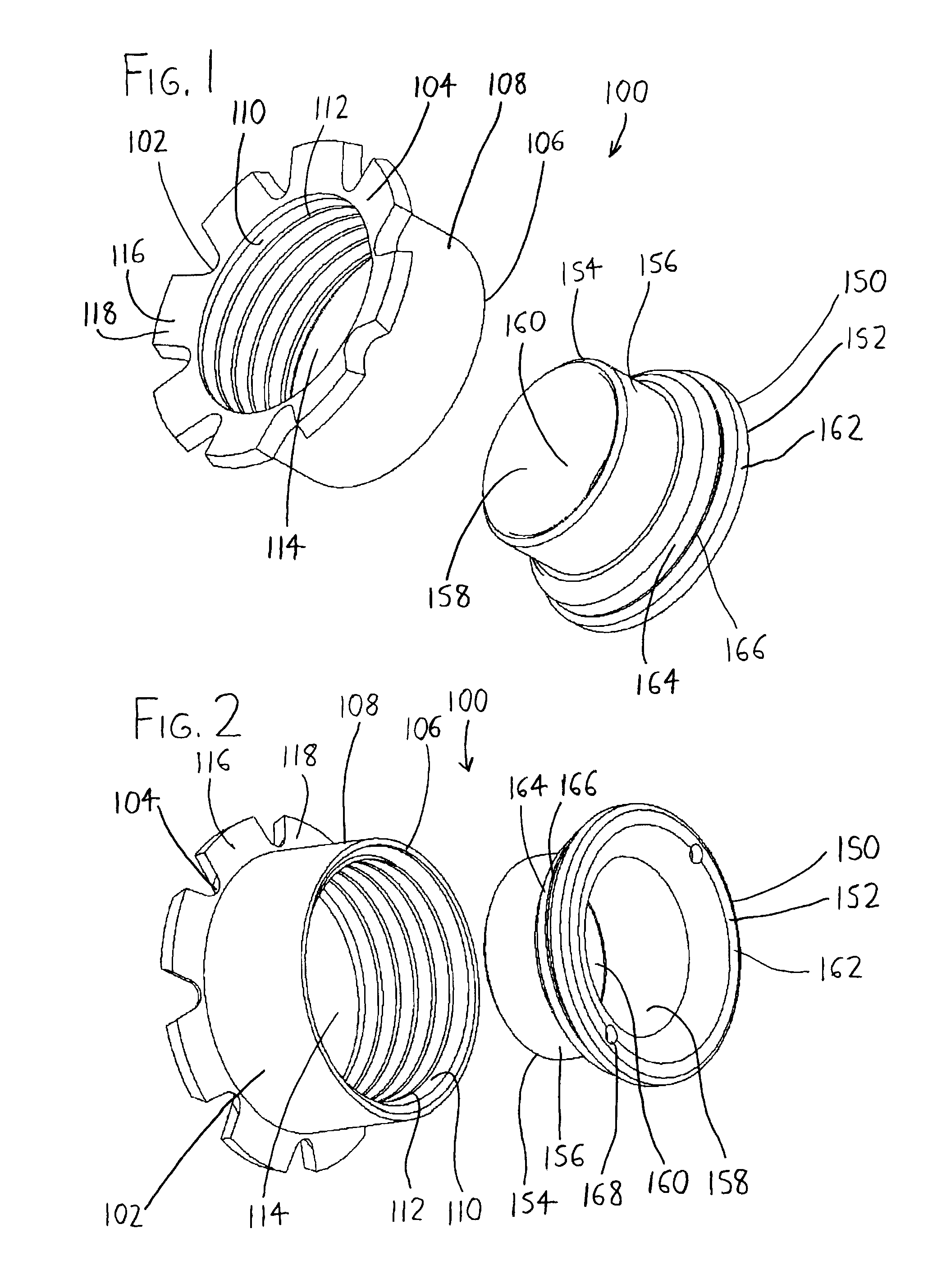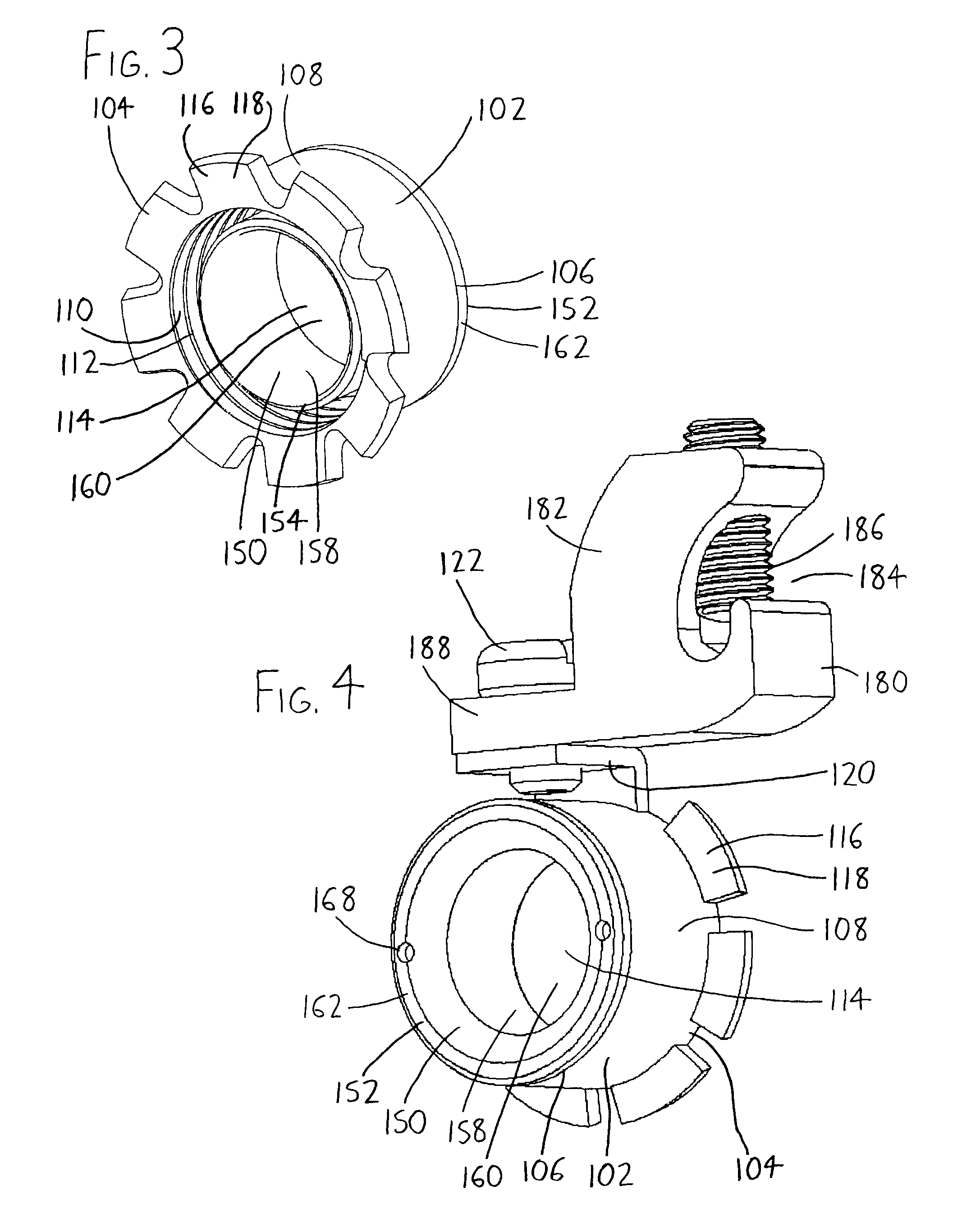Connector / bushing assembly for electrical junction boxes
a technology for connecting parts and junction boxes, which is applied in the direction of cable terminations, insulating bodies, manufacturing tools, etc., can solve the problems of poor protection of cables at junction boxes, poor difficult installation of cables, so as to improve the grip of nut teeth, facilitate cable insertion, and improve the effect of elasticity
- Summary
- Abstract
- Description
- Claims
- Application Information
AI Technical Summary
Benefits of technology
Problems solved by technology
Method used
Image
Examples
Embodiment Construction
[0018]Referring particularly to FIG. 5 to assist in visualizing the invention, the connector assembly 100 may be installed in the junction box 200 in the following manner. Initially, the male connector 130 may have its threaded connector junction end 138 inserted into the box wall passage 206 of the junction box 200 by some desired amount. In this respect, the exemplary male connector 130 of FIG. 5 is shown with an insertion flange 144 next to its connector junction end 138, with the insertion flange 144 limiting insertion of the junction end 138 into the box wall passage 206 (i.e., the connector junction end 138 may be inserted into the box wall passage 206 until the insertion flange 144 interferes with the box wall 202). The nut 102 may then be threaded onto the connector junction end 138, with the connector junction end 138 being received within the inner nut passage 114 to engage the nut threading 112 on the inner nut surface 110 (best seen in FIG. 3). As this is done, the box w...
PUM
 Login to View More
Login to View More Abstract
Description
Claims
Application Information
 Login to View More
Login to View More - Generate Ideas
- Intellectual Property
- Life Sciences
- Materials
- Tech Scout
- Unparalleled Data Quality
- Higher Quality Content
- 60% Fewer Hallucinations
Browse by: Latest US Patents, China's latest patents, Technical Efficacy Thesaurus, Application Domain, Technology Topic, Popular Technical Reports.
© 2025 PatSnap. All rights reserved.Legal|Privacy policy|Modern Slavery Act Transparency Statement|Sitemap|About US| Contact US: help@patsnap.com



